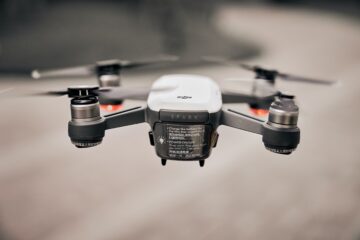How to Control IoT Devices
In today’s interconnected world, we are surrounded by devices that are constantly exchanging data to make our lives more convenient and efficient. This network of devices, known as the Internet of Things (IoT), includes everything from smart speakers and thermostats to fitness trackers and even self-driving cars. With the increasing number of IoT devices in our lives, it is essential to understand how to control and manage them effectively. In this blog post, we will explore various methods and techniques to control IoT devices, ensuring that you have the power to make the most out of your smart devices.
Understanding IoT Devices
Before we delve deeper into controlling IoT devices, let’s ensure we have a clear understanding of what they are. IoT devices are everyday objects that are connected to the internet and can communicate with other devices or systems. These devices have embedded sensors, processors, and software that allow them to collect and exchange data. This network of devices enables us to monitor and control them remotely, making our lives more convenient and efficient.
Connecting IoT Devices to a Network
To control IoT devices, you first need to connect them to a network. Most IoT devices use Wi-Fi or Bluetooth to connect to the internet. Here are the steps to connect your IoT device to a network:
- Power on the device and ensure it is within range of your Wi-Fi router or Bluetooth device.
- Open the companion app or settings menu on your device.
- Follow the on-screen instructions to connect the device to your Wi-Fi network or pair it with your Bluetooth device.
- Once connected, the device will be able to send and receive data from other devices or systems on the network.
Managing IoT Devices Through Companion Apps
Companion apps play a crucial role in controlling IoT devices. These apps act as a bridge between you and your smart devices, allowing you to configure settings, monitor data, and control the devices remotely. Here are some common features found in companion apps:
- Device Configuration: Most companion apps allow you to customize settings for your IoT devices. For example, you can adjust the temperature settings on your smart thermostat or create custom lighting schedules for your smart bulbs.
- Data Monitoring: Many IoT devices collect data about your usage patterns or environment. Companion apps provide a convenient way to monitor this data, helping you make informed decisions. For instance, you can view your energy consumption patterns or check the air quality readings from your smart air purifier.
- Remote Control: One of the key advantages of IoT devices is the ability to control them remotely. Companion apps enable you to turn devices on or off, adjust settings, and even receive real-time notifications. Imagine being able to turn on your smart coffee maker from bed in the morning or receive an alert when someone rings your smart doorbell.
Companion apps are typically available for smartphones and tablets through app stores. Simply search for the app associated with your IoT device, download it, and follow the on-screen instructions to set it up.
Voice Control with AI Assistants
Controlling IoT devices through companion apps can be convenient, but it often requires taking out your smartphone and navigating through menus. Enter voice control with AI assistants. AI assistants like Amazon Alexa, Google Assistant, and Apple Siri have revolutionized the way we interact with our IoT devices.
- Setting Up an AI Assistant: To control your IoT devices using voice commands, you need to set up an AI assistant. Different assistants have different setup processes, but generally, you’ll need to download the associated app, follow the on-screen instructions, and connect it to your IoT devices.
- Pairing Your Devices: Once the AI assistant is set up, you’ll need to pair your IoT devices with it. This process varies depending on the assistant and the devices you own. It typically involves linking your accounts or enabling specific skills or actions.
- Controlling Devices with Voice Commands: After setup and pairing, you can control your IoT devices using voice commands. Simply wake up the AI assistant by saying its wake word (e.g., “Hey Alexa” or “OK Google”), followed by your command. For example, you could say, “Hey Alexa, dim the lights in the living room,” or “OK Google, set the thermostat to 72 degrees.”
Voice control with AI assistants provides a hands-free and intuitive way to control your IoT devices. It allows for quick adjustments and enhances accessibility for individuals with mobility challenges.
Creating Automation and Scenes
While controlling IoT devices individually can be convenient, creating automation and scenes can take your smart home experience to the next level. Automation involves setting up rules or triggers that automate device actions based on specific events or conditions. Scenes, on the other hand, allow you to control multiple devices simultaneously with a single command or action.
- Automation: Imagine waking up in the morning, and your smart blinds automatically open, your smart lights gradually turn on, and your smart coffee maker begins brewing. Automation can make this a reality. Most companion apps and AI assistants allow you to create automation rules based on events like time, location, or environmental conditions. For instance, you can schedule your lights to turn off when you leave home or have your smart thermostat adjust the temperature based on the weather forecast.
- Scenes: Scenes enable you to control multiple devices with a single command or action. For example, you can create a scene called “Movie Time” that dims the lights, lowers the blinds, and turns on the TV. Instead of controlling each device separately, you simply activate the “Movie Time” scene. This convenience makes scenes especially useful for specific routines or activities.
Automation and scenes empower you to customize and streamline your smart home experience. You can create personalized routines that fit your lifestyle and preferences, eliminating the need for manual control.
Securing Your IoT Devices
While the convenience and functionality of IoT devices are undeniable, it’s crucial to prioritize their security. IoT devices, like any other connected devices, can be vulnerable to cyber threats. Here are some essential tips to secure your IoT devices:
- Change Default Credentials: Many IoT devices come with default usernames and passwords. It’s essential to change these credentials during setup to prevent unauthorized access. Choose strong, unique passwords and consider using a password manager to keep track of them.
- Keep Software Up to Date: Regularly update the firmware and software of your IoT devices. Manufacturers often release patches and updates to fix security vulnerabilities. By keeping your devices up to date, you ensure that they have the latest security enhancements.
- Create a Separate Network: Consider setting up a separate network for your IoT devices. This can help isolate them from your primary network, protecting your sensitive data in case of a breach. Many routers offer a feature called “guest network” that can be used for this purpose.
- Research Before Buying: Before purchasing an IoT device, research the manufacturer’s security practices. Look for devices that have a good track record of security updates and customer support. Reading reviews and learning from others’ experiences can also give you valuable insights.
- Physical Security: Finally, be mindful of the physical security of your IoT devices. Ensure that devices like security cameras or smart locks are installed and placed securely. Regularly check for any signs of tampering or physical vulnerabilities.
By following these security measures, you can mitigate the risks associated with IoT devices and ensure a safer and more secure smart home environment.
Conclusion
Controlling IoT devices is all about using the right tools and techniques to enhance convenience and efficiency. Whether through companion apps, voice control with AI assistants, automation, or scenes, you have the power to control your smart devices with ease. However, it’s essential to prioritize security to protect your privacy and data. By following our tips and best practices, you can make the most of your IoT devices while keeping them secure. Embrace the power of IoT and unlock a world of possibilities in your everyday life.
Now that you have a firm grasp on controlling IoT devices, go ahead and explore the possibilities. Create unique automations, set up scenes that reflect your lifestyle, and make your smart devices work for you. The future is here, and you have the tools and knowledge to make it even smarter!


0 Comments